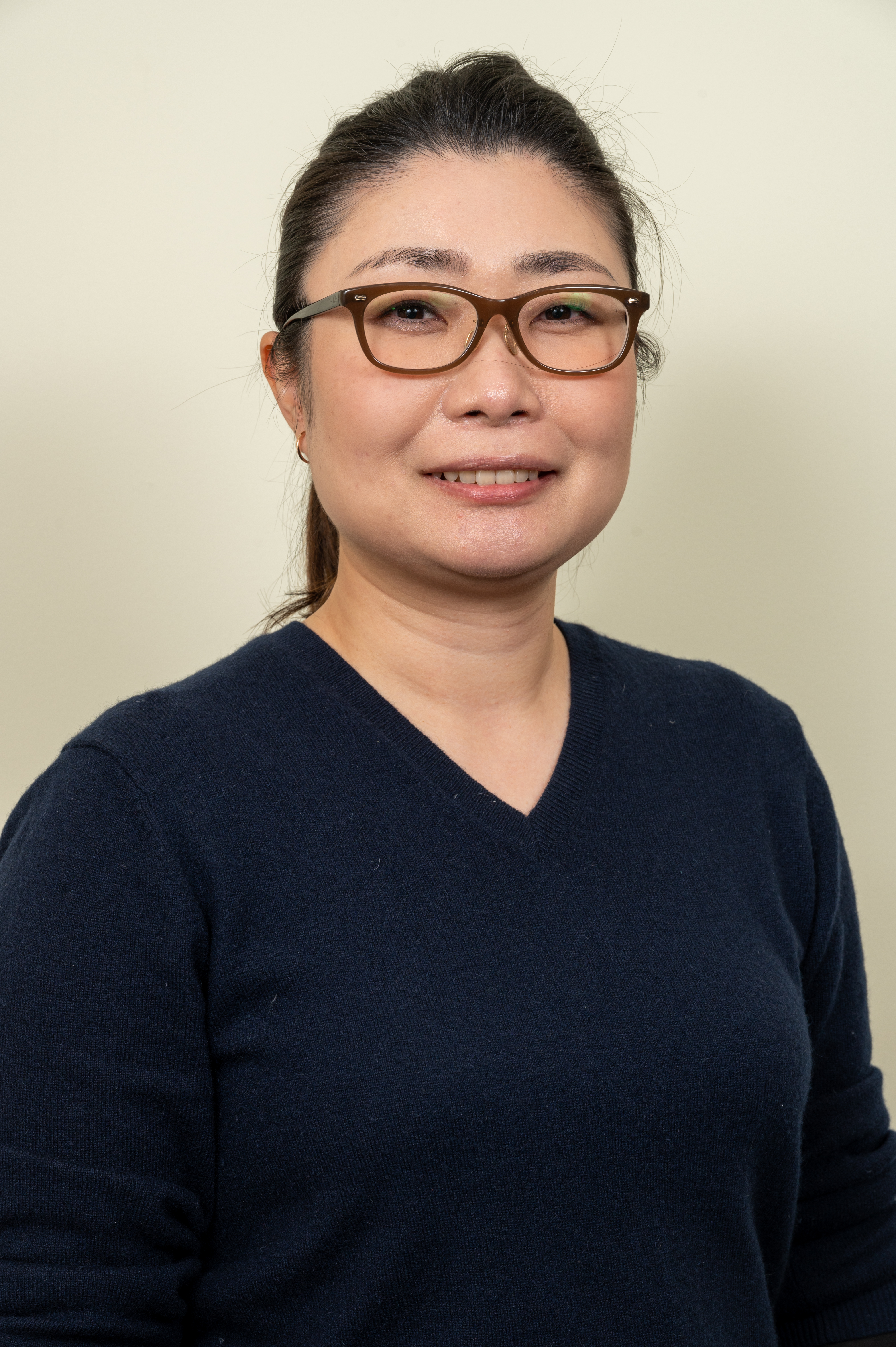High Impact Grant Recipient

R. Hal Scofield, MD
Professor
Oklahoma Medical Research Foundation
Project Title: Mechanisms of Fatigue in Sjögren’s
Abstract: Sjögren’s disease (SjD) is chronic autoimmune disease in which the deleterious immune response is directed primarily towards the exocrine glands, including the lacrimal and salivary glands. Severe fatigue is common in SjD. There is only a limited understanding of the pathophysiology of fatigue in SjD. Overall, there are large areas of unmet medical needs in SjD, including understanding the pathophysiological mechanisms of the clinical manifestations. Our preliminary data demonstrate mitochondrial dysfunction in SjD patients, a novel finding. Also, fatigue is highly correlated with mitochondrial dysfunction. We find increased free radical damage and abnormal expression of mitophagy-related genes. These findings provide a powerful premise for the proposed work. The PI hypothesizes that mitochondrial dysfunction is associated with fatigue and is caused by abnormal mitophagy, with increased free radical generation by defective mitochondria. We propose the following specific aims to address our hypothesis: In Aim 1, we will determine the clinical associations and correlates of mitochondrial dysfunction among a large group of SjD patients, testing the hypothesis that mitochondrial dysfunction is correlated with fatigue. We further hypothesize that kynurenine levels, lowered by chronic, low-level inflammation, will be associated with mitochondrial dysfunction and fatigue in SjD. For Aim 2, we hypothesize that worsened free radical damage will be strongly associated with worsened mitochondrial function. Here, we will determine the role of free radicals in SjD mitochondrial dysfunction. In Aim 3, we will determine the role of mitophagy in SjD mitochondrial dysfunction, testing the hypothesis that not only will one of the two central pathways for mitophagy be abnormal within lymphocytes in the peripheral blood, but that this abnormal expression will be found among those patients with mitochondrial dysfunction and fatigue.
Pilot Grant Recipients

Jennifer King, MD, PhD
Associate Clinical Professor in Medicine
University of California, Los Angeles
Project Title: Molecular Phenotyping of Treatment Responsive Sjögren’s Patients
Abstract: There are no FDA-approved treatments for Sjögren’s disease (SjD). The reasons for failures of immune modulating medications are multi-factorial, including diversity of clinical disease and challenges of selecting primary endpoints to define treatment response. This proposal will examine SjD patients considered treatment responsive (defined here as changes in 1 or more validated Sjögren’s outcome measures) to define objective cellular and molecular markers of change. We will compare these patients to treatment non-responsive and no treatment. We will use single-cell sequencing to examine individual’s pre- and post-treatment samples, looking at global signatures in all immune cells, but also specifically in monocyte subsets. We hypothesize that treatment responsive SjD patients have distinct cellular and molecular characteristics that correlate with changes in disease activity. The goal is to define objective signatures that may be used in conjunction with current disease outcome measures to assess treatment response.

Abigail Koppes, PhD
Associate Professor, Chemical Engineering
Northeastern University
Project Title: Parsing Dysautonomia in a Dish: Neural Exposure to Exogenous Sjögren’s Patient Derived Serum
Abstract: The complexity of nervous system interactions and cause-effect of glandular involvement in organ health in Sjögren’s patients creates a difficult disease to treat and identify. Dysautonomia and gastrointestinal disorders are correlated with the presence of autoantibodies and interferon and interleukin cascade activation, but the cause is not known. In this proposal, my lab will apply a new in vitro microphysiological system (MPS), or organ-on-a-chip, that combines human autonomic, central, and enteric neurons to systematically examine morphology and excitability in response to Sjögren’s derived serum and autoantibody insults. Our MPS will be used for effluent collection, electrophysiology, imaging, and transcriptomics with a systems biology approach to identify the molecular regulators and reveal if there are Sjögren’s-based differences in neuron responses to inflammatory cues. Through this proposal, a new MPS will be engineered to controllably study and disrupt the nervous system in the gut-brain axis environment typically inaccessible in vivo.

Eiko Yamada, DDS, PhD
Research Fellow
National Institute of Dental and Craniofacial Research
Project Title: Exploring Target Cells Contributing Higher Interferon Status Through cGAS-STING Pathway in Sjögren’s Disease
Abstract: Sjögren’s disease (SjD) is a common systemic autoimmune disease with heterogeneous clinical presentation involving multiple biological pathways. The primary clinical symptoms include characteristic dry eyes, dry mouth, and profound fatigue. Currently, there are no approved and efficacious medications that can reverse disease progression or improve the main clinical complaints of SjD. One pathway that is classically involved in SjD is the Type-I interferon (IFN) signaling. However, the upstream mechanisms driving the increase in expression, or lack of feedback inhibition, of Type-I IFN is not elucidated deeply. The cGAS-STING pathway is a recently discovered intracellular pathogen sensing pathway that primarily responds to cytosolic double-stranded DNA. The cGAS-STING pathway has become a hot topic in immune and inflammatory diseases due to its ability to potently mediate the inflammatory response. Although a recent study offered the first direct evidence that cGAS-STING pathway is activated in systemic lupus erythematosus patients and modulates Type-I IFNs, the role of this pathway in SjD pathogenesis is unknown. Our preliminary bulk RNAseq data demonstrate enrichment of DNA Sensing Pathway and increased Type-I IFN-stimulated gene score in the blood and gland correlate with specific disease features in SjD. We discovered the novel findings that cGAS-STING proteins are activated in SjD and that correlates with Type-I IFN bioassay in sera. Based on these findings, we hypothesize that cGAS-STING pathway is chronically activated in SjD and contributes both local (glandular) and systemic (peripheral blood) symptoms via upregulated and persistent expression of IFNs. This study proposal aims to identify the specific cell types contributing cGAS-STING pathway in SjD-affected patient samples. This work will produce a deeper understanding of what happened as immune cell subset in SjD and support the future development of cGAS-STING proteins as targets for therapy.
Dynamic Grant Recipient

Dana DiRenzo, MD, MHS
Assistant Professor in Medicine
University of Pennsylvania
Project Title: Development of a Core Outcomes Set of Domains for Sjögren’s Disease
Abstract: Sjögren’s disease (SjD) has limited precise and reliable patient-reported outcome measures (PROs) to understand health related quality of life (HRQoL) from the patient perspective. SjD highly impacts HRQoL because of symptoms such as pain and fatigue, which drive patient disability, loss of work productivity, and healthcare utilization. The overall objectives are to identify SjD domains that are important to all relevant SjD stakeholders and generate a core outcome domain set. The rationale is that through the rigorous methodologic OMERACT framework, we will define key disease domains and core set measures to generate optimal measurement tools for clinical trials. The central hypothesis will be tested by three specific aims: 1) Generate a comprehensive list of important domains in SjD for each key aspect of disease (oral, ocular, biological, extra glandular, life impact) via literature reviews and focus groups; and 2) Conduct a Delphi exercise of generated domains in SjD to gain consensus agreement and inform a core domain set; and 3) Generate a core domain set and seek approval from the OMERACT community. The research proposed is innovative because for the first time, it engages all stakeholders from at least three continents from the start of the process for generation and selection of instruments to measure response in SjD clinical trials.
Continuing Research Grants from Prior Years
Cintia S. de Paiva, MD, PhD
Baylor College of Medicine - Ocular Surface Center
Project Title: Investigating Oral and Conjunctival Gene Transcriptome Signature in Sjögren’s at the Single Cell Level
Dr. de Paiva and her team believe that cells from the eye surface and mouth taken from patients with dry eye and dry mouth carry a distinct gene signature from patients with dry eye only and control subjects. They are using a novel technique that can identify the genes from the eye and the mouth at a single-cell level. Identification of a Sjögren’s gene expression signature would provide relevant diagnostic markers that could be used in the future.
Chris Lessard, PhD
Oklahoma Medical Research Foundation
Project Title: Expanding Our Understanding of the Heterogeneity and Heritability of Sjögren’s in Diverse Populations
Dr. Lessard and colleagues have identified 10 novel risk loci associated with Sjögren’s of European ancestry (n=~3900 cases). To improve our understanding of how genetic risk loci contribute to disease pathology and clinical heterogeneity, they are working to increase their discovery power by acquiring a sufficiently large sample size (goal of 10,000 cases) with adequate clinical information for subphenotype analyses. Leveraging the additional genotype and clinical data will enable the identification of additional risk loci and ask critical subphenotype-specific questions.
Thomas Grader Beck, MD, PhD
Johns Hopkins University
Project Title: Leveraging Leveraging Electronic Health Record Systems to Establish a Multi-Center Collaboration Platform for Quality of Care and Clinical Research in Sjögren’s Disease
Dr. Grader Beck and colleagues have developed a comprehensive clinical module for Sjögren’s that is integrated into the EHR system and are working to implement the module across sites to facilitate high quality standardized data collection.
Rachael Gordon, MD, PhD
University of Pittsburgh
Project Title: Investigating the Role of IL-12 in Sjögren’s Disease Pathogenesis
Dr. Gordon has hypothesized that IL-12 promotes SjD. Her team is testing this hypothesis by treating NOD.B10 SjD prone mice with an IL-12 neutralizing antibody and evaluating clinical and immunologic features of disease. Elucidating a pathogenic role for IL-12 in SjD will serve as the rationale for developing a human monoclonal IL-12 antibody for the treatment of SjD and other IL-12-driven diseases.
Harim Tavares dos Santos, DDS, PhD
University of Missouri
Project Title: The Role of Tuft Cells in Salivary Gland Immunity
Dr. Tavares dos Santos is exploring the role of tuft cells in salivary gland immunity. As part of this, he is investigating tuft cell distribution and function in the salivary gland epithelium; (2) determing tuft cell chemosensory components in the salivary gland epithelium; (3) and determing the role of tuft cells in salivary gland immunity utilizing a Sjögren’s disease-like mouse model and human specimens. Together, the new generated information will allow a better understanding of tuft cell biology in the salivary glands and provide therapeutic targets for salivary gland diseases.
Anat Galor, MD, MSPH
Miami Veterans Affairs
Bascom Palmer Eye Institute, University of Miami
Project Title: Defining and Understanding Neurologic Manifestations of Sjögren’s Based on Ocular S Surface Phenotype
Dr. Galor hypothesized that the phenotype of ocular surface pain out of proportion to clinical signs of dryness is a harbinger for neurologic dysfunction in SjD. This hypothesis is being tested through a comprehensive protocol that consists of a clinical examination, quantitative sensory testing (Aim 1), and detection of neuro-inflammatory signatures in blood (Aim 2) in individuals with SjD grouped by ocular phenotypes (pain vs. dryness). These results will examine how ocular phenotypes relate to neurosensory metrics in SjD. Along with advancing understanding of SjD pathophysiology, these data can be used to develop clinically relevant diagnostic tests that subgroup individuals based on underlying mechanisms, an important first step to developing targeted therapies
The Sjögren's Foundation is excited to announce the recipients of our 2024 Sjögren's Foundation research grants and renewals. This year we awarded one High Impact Grant, three Pilot Grants, and one Dynamic Grant. The five grant recipients and their research abstracts are listed below as well as continuing research grants from prior years. If you would like to learn more about how Foundation grants and the selected research projects impact patients with Sjögren's, please read our blog.
High Impact Grant Recipient
R. Hal Scofield, MD
Professor
Oklahoma Medical Research Foundation
Project Title: Mechanisms of Fatigue in Sjögren’s
Abstract: Sjögren’s disease (SjD) is chronic autoimmune disease in which the deleterious immune response is directed primarily towards the exocrine glands, including the lacrimal and salivary glands. Severe fatigue is common in SjD. There is only a limited understanding of the pathophysiology of fatigue in SjD. Overall, there are large areas of unmet medical needs in SjD, including understanding the pathophysiological mechanisms of the clinical manifestations. Our preliminary data demonstrate mitochondrial dysfunction in SjD patients, a novel finding. Also, fatigue is highly correlated with mitochondrial dysfunction. We find increased free radical damage and abnormal expression of mitophagy-related genes. These findings provide a powerful premise for the proposed work. The PI hypothesizes that mitochondrial dysfunction is associated with fatigue and is caused by abnormal mitophagy, with increased free radical generation by defective mitochondria. We propose the following specific aims to address our hypothesis: In Aim 1, we will determine the clinical associations and correlates of mitochondrial dysfunction among a large group of SjD patients, testing the hypothesis that mitochondrial dysfunction is correlated with fatigue. We further hypothesize that kynurenine levels, lowered by chronic, low-level inflammation, will be associated with mitochondrial dysfunction and fatigue in SjD. For Aim 2, we hypothesize that worsened free radical damage will be strongly associated with worsened mitochondrial function. Here, we will determine the role of free radicals in SjD mitochondrial dysfunction. In Aim 3, we will determine the role of mitophagy in SjD mitochondrial dysfunction, testing the hypothesis that not only will one of the two central pathways for mitophagy be abnormal within lymphocytes in the peripheral blood, but that this abnormal expression will be found among those patients with mitochondrial dysfunction and fatigue.
Pilot Grant Recipients
Jennifer King, MD, PhD
Associate Clinical Professor in Medicine
University of California, Los Angeles
Project Title: Molecular Phenotyping of Treatment Responsive Sjögren’s Patients
Abstract: There are no FDA-approved treatments for Sjögren’s disease (SjD). The reasons for failures of immune modulating medications are multi-factorial, including diversity of clinical disease and challenges of selecting primary endpoints to define treatment response. This proposal will examine SjD patients considered treatment responsive (defined here as changes in 1 or more validated Sjögren’s outcome measures) to define objective cellular and molecular markers of change. We will compare these patients to treatment non-responsive and no treatment. We will use single-cell sequencing to examine individual’s pre- and post-treatment samples, looking at global signatures in all immune cells, but also specifically in monocyte subsets. We hypothesize that treatment responsive SjD patients have distinct cellular and molecular characteristics that correlate with changes in disease activity. The goal is to define objective signatures that may be used in conjunction with current disease outcome measures to assess treatment response.
Abigail Koppes, PhD
Associate Professor, Chemical Engineering
Northeastern University
Project Title: Parsing Dysautonomia in a Dish: Neural Exposure to Exogenous Sjögren’s Patient Derived Serum
Abstract: The complexity of nervous system interactions and cause-effect of glandular involvement in organ health in Sjögren’s patients creates a difficult disease to treat and identify. Dysautonomia and gastrointestinal disorders are correlated with the presence of autoantibodies and interferon and interleukin cascade activation, but the cause is not known. In this proposal, my lab will apply a new in vitro microphysiological system (MPS), or organ-on-a-chip, that combines human autonomic, central, and enteric neurons to systematically examine morphology and excitability in response to Sjögren’s derived serum and autoantibody insults. Our MPS will be used for effluent collection, electrophysiology, imaging, and transcriptomics with a systems biology approach to identify the molecular regulators and reveal if there are Sjögren’s-based differences in neuron responses to inflammatory cues. Through this proposal, a new MPS will be engineered to controllably study and disrupt the nervous system in the gut-brain axis environment typically inaccessible in vivo.
Eiko Yamada, DDS, PhD
Research Fellow
National Institute of Dental and Craniofacial Research
Project Title: Exploring Target Cells Contributing Higher Interferon Status Through cGAS-STING Pathway in Sjögren’s Disease
Abstract: Sjögren’s disease (SjD) is a common systemic autoimmune disease with heterogeneous clinical presentation involving multiple biological pathways. The primary clinical symptoms include characteristic dry eyes, dry mouth, and profound fatigue. Currently, there are no approved and efficacious medications that can reverse disease progression or improve the main clinical complaints of SjD. One pathway that is classically involved in SjD is the Type-I interferon (IFN) signaling. However, the upstream mechanisms driving the increase in expression, or lack of feedback inhibition, of Type-I IFN is not elucidated deeply. The cGAS-STING pathway is a recently discovered intracellular pathogen sensing pathway that primarily responds to cytosolic double-stranded DNA. The cGAS-STING pathway has become a hot topic in immune and inflammatory diseases due to its ability to potently mediate the inflammatory response. Although a recent study offered the first direct evidence that cGAS-STING pathway is activated in systemic lupus erythematosus patients and modulates Type-I IFNs, the role of this pathway in SjD pathogenesis is unknown. Our preliminary bulk RNAseq data demonstrate enrichment of DNA Sensing Pathway and increased Type-I IFN-stimulated gene score in the blood and gland correlate with specific disease features in SjD. We discovered the novel findings that cGAS-STING proteins are activated in SjD and that correlates with Type-I IFN bioassay in sera. Based on these findings, we hypothesize that cGAS-STING pathway is chronically activated in SjD and contributes both local (glandular) and systemic (peripheral blood) symptoms via upregulated and persistent expression of IFNs. This study proposal aims to identify the specific cell types contributing cGAS-STING pathway in SjD-affected patient samples. This work will produce a deeper understanding of what happened as immune cell subset in SjD and support the future development of cGAS-STING proteins as targets for therapy.
Dynamic Grant Recipient
Dana DiRenzo, MD, MHS
Assistant Professor in Medicine
University of Pennsylvania
Project Title: Development of a Core Outcomes Set of Domains for Sjögren’s Disease
Abstract: Sjögren’s disease (SjD) has limited precise and reliable patient-reported outcome measures (PROs) to understand health related quality of life (HRQoL) from the patient perspective. SjD highly impacts HRQoL because of symptoms such as pain and fatigue, which drive patient disability, loss of work productivity, and healthcare utilization. The overall objectives are to identify SjD domains that are important to all relevant SjD stakeholders and generate a core outcome domain set. The rationale is that through the rigorous methodologic OMERACT framework, we will define key disease domains and core set measures to generate optimal measurement tools for clinical trials. The central hypothesis will be tested by three specific aims: 1) Generate a comprehensive list of important domains in SjD for each key aspect of disease (oral, ocular, biological, extra glandular, life impact) via literature reviews and focus groups; and 2) Conduct a Delphi exercise of generated domains in SjD to gain consensus agreement and inform a core domain set; and 3) Generate a core domain set and seek approval from the OMERACT community. The research proposed is innovative because for the first time, it engages all stakeholders from at least three continents from the start of the process for generation and selection of instruments to measure response in SjD clinical trials.
Continuing Research Grants from Prior Years
Cintia S. de Paiva, MD, PhD
Baylor College of Medicine - Ocular Surface Center
Project Title: Investigating Oral and Conjunctival Gene Transcriptome Signature in Sjögren’s at the Single Cell Level
Dr. de Paiva and her team believe that cells from the eye surface and mouth taken from patients with dry eye and dry mouth carry a distinct gene signature from patients with dry eye only and control subjects. They are using a novel technique that can identify the genes from the eye and the mouth at a single-cell level. Identification of a Sjögren’s gene expression signature would provide relevant diagnostic markers that could be used in the future.
Chris Lessard, PhD
Oklahoma Medical Research Foundation
Project Title: Expanding Our Understanding of the Heterogeneity and Heritability of Sjögren’s in Diverse Populations
Dr. Lessard and colleagues have identified 10 novel risk loci associated with Sjögren’s of European ancestry (n=~3900 cases). To improve our understanding of how genetic risk loci contribute to disease pathology and clinical heterogeneity, they are working to increase their discovery power by acquiring a sufficiently large sample size (goal of 10,000 cases) with adequate clinical information for subphenotype analyses. Leveraging the additional genotype and clinical data will enable the identification of additional risk loci and ask critical subphenotype-specific questions.
Thomas Grader Beck, MD, PhD
Johns Hopkins University
Project Title: Leveraging Leveraging Electronic Health Record Systems to Establish a Multi-Center Collaboration Platform for Quality of Care and Clinical Research in Sjögren’s Disease
Dr. Grader Beck and colleagues have developed a comprehensive clinical module for Sjögren’s that is integrated into the EHR system and are working to implement the module across sites to facilitate high quality standardized data collection.
Rachael Gordon, MD, PhD
University of Pittsburgh
Project Title: Investigating the Role of IL-12 in Sjögren’s Disease Pathogenesis
Dr. Gordon has hypothesized that IL-12 promotes SjD. Her team is testing this hypothesis by treating NOD.B10 SjD prone mice with an IL-12 neutralizing antibody and evaluating clinical and immunologic features of disease. Elucidating a pathogenic role for IL-12 in SjD will serve as the rationale for developing a human monoclonal IL-12 antibody for the treatment of SjD and other IL-12-driven diseases.
Harim Tavares dos Santos, DDS, PhD
University of Missouri
Project Title: The Role of Tuft Cells in Salivary Gland Immunity
Dr. Tavares dos Santos is exploring the role of tuft cells in salivary gland immunity. As part of this, he is investigating tuft cell distribution and function in the salivary gland epithelium; (2) determing tuft cell chemosensory components in the salivary gland epithelium; (3) and determing the role of tuft cells in salivary gland immunity utilizing a Sjögren’s disease-like mouse model and human specimens. Together, the new generated information will allow a better understanding of tuft cell biology in the salivary glands and provide therapeutic targets for salivary gland diseases.
Anat Galor, MD, MSPH
Miami Veterans Affairs
Bascom Palmer Eye Institute, University of Miami
Project Title: Defining and Understanding Neurologic Manifestations of Sjögren’s Based on Ocular S Surface Phenotype
Dr. Galor hypothesized that the phenotype of ocular surface pain out of proportion to clinical signs of dryness is a harbinger for neurologic dysfunction in SjD. This hypothesis is being tested through a comprehensive protocol that consists of a clinical examination, quantitative sensory testing (Aim 1), and detection of neuro-inflammatory signatures in blood (Aim 2) in individuals with SjD grouped by ocular phenotypes (pain vs. dryness). These results will examine how ocular phenotypes relate to neurosensory metrics in SjD. Along with advancing understanding of SjD pathophysiology, these data can be used to develop clinically relevant diagnostic tests that subgroup individuals based on underlying mechanisms, an important first step to developing targeted therapies